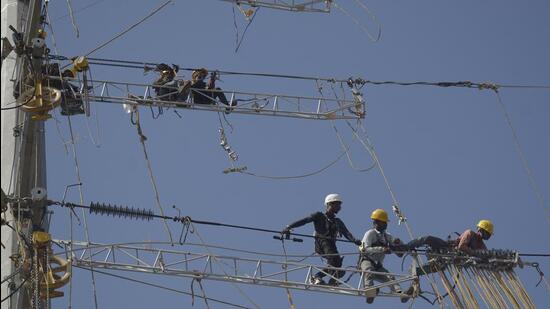NEW DELHI: West Bengal has emerged as the top beneficiary of the Centre’s additional borrowing incentive scheme for power sector reforms in 2021-22 and 2022-23, followed by Rajasthan and Andhra Pradesh, according to official data.
Based on the recommendations of the Union power ministry, the Centre allowed 12 states to raise additional financial resources of ₹66,413 crore for reforms undertaken in 2021-22 and 2022-23, the Union finance ministry said in a statement on Wednesday.
While West Bengal topped the list of 12 states in availing ₹15,263 crore cumulative amount of additional borrowing permission for 2021-22 and 2022-23, Rajasthan’s share was ₹11,308 crore and Andhra Pradesh ₹9,574 crore.
“The initiative has spurred state governments to initiate the reform process, and several states have come forward and submitted details of the reforms undertaken and achievements of various parameters to the ministry of power,” it said.
The initiative was announced by the Union finance minister Nirmala Sitharaman in the Union Budget for FY22. Under this scheme, an additional borrowing space of up to 0.5% of the gross state domestic product (GSDP) is available to the states annually for a four-year period starting from 2021-22. This additional financial window is dependent on the implementation of specific reforms in the power sector by states.
“In accordance with the views of the 15th Finance Commission, we are allowing a normal ceiling of net borrowing for the states at 4% of GSDP for the year 2021-2022. A portion of this ceiling will be earmarked to be spent on incremental capital expenditure. Additional borrowing ceiling of 0.5% of GSDP will also be provided subject to conditions,” the finance minister said in her speech on February 1, 2021.
States can continue to avail the special dispensation linked to power sector reforms in the current financial year (2023-24).
“An amount of ₹1,43,332 crore will be available as an incentive to states for undertaking these reforms in 2023-24. States that were unable to complete the reform process in 2021-22 and 2022-23 may also benefit from the additional borrowing earmarked for 2023-24 if they carry out the reforms in the current financial year,” the finance ministry statement said.
Other beneficiaries of the scheme for reforms undertaken in 2021-22 and 2022-23 are Kerala (received additional borrowing permission for ₹8,323 crore), Tamil Nadu ( ₹7,054 crore), Uttar Pradesh ( ₹6,823 crore), Sikkim ( ₹361 crore), Odisha ( ₹2,725 crore), Meghalaya ( ₹192 crore), Manipur ( ₹180 crore) Himachal Pradesh ( ₹251 crore), and Assam ( ₹4,359 crore).
The objective of granting financial incentives for undertaking power sector reforms is to improve operational and economic efficiency within the sector and promote a sustained increase in paid electricity consumption, the finance ministry said.
For this incentive, states must undertake a set of mandatory reforms and meet stipulated performance benchmarks such as progressive assumption of responsibility for losses of public sector power distribution companies (Discoms) by the state government, transparency in the reporting of financial affairs of power sector including payment of subsidies and recording of liabilities of governments to Discoms and of Discoms to others, timely rendition of financial and energy accounts and timely audit. The scheme also stipulates compliance with legal and regulatory requirements.
Upon completion of these reforms, a state’s performance is evaluated based on specific criteria to determine its eligibility for the incentive amount which may range from 0.25% to 0.5% of its GDP.
The evaluation criteria include the percentage of metered electricity consumption against total energy consumption (including agricultural connections), subsidy payment by Direct Benefit Transfer (DBT) to consumers and achievement of targets for reduction in aggregate technical and commercial (AT&C) loss.
Reduction in cross-subsidies, payment of electricity bills by government departments and local bodies, installation of prepaid meters in government offices, and use of innovations and innovative technologies, are other criteria. States also get bonus marks for the privatisation of power distribution companies.
